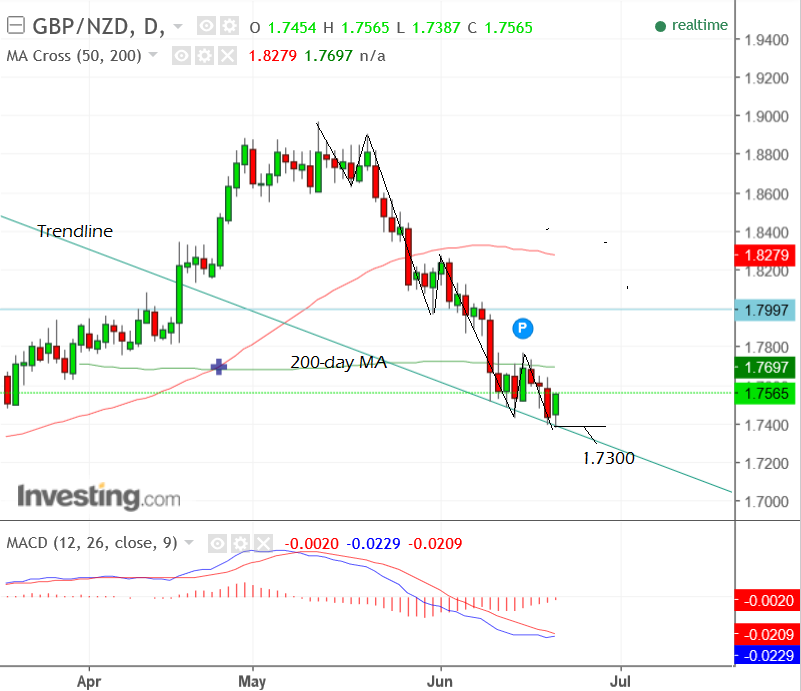New Zealand Dollar in Strong Rally v Pound as RBNZ Strikes Positive Tone at June Meet

The Reserve Bank of New Zealand left interest rates unchanged at their June policy meeting.
The New Zealand Dollar strengthened on the tone struck in the accompanying statement as the central bank did not issue any substantive grievances regarding the historically over-priced currency.
The RBNZ has acknowledged that the NZD has risen since then and believes that “a lower New Zealand Dollar would help rebalance the growth outlook towards the tradable sector”.
"There is nothing stern in this and it’s hard to argue against currency strength when your terms of trade are set to hit an all-time high. Given the NZD’s spike, the market was obviously looking for something more," says Cameron Bagrie, Chief Economist, at ANZ Research.
The Pound to New Zealand Dollar exchange rate is seen lower at 1.7474 following the event and remains near four-month lows.
The New Zealand to US Dollar exchange rate is seen at 0.7256, near 20-week highs.
Concerning the RBNZ's future moves, most analysts reckon it won't be until 2018 is well underway that we get any kind of substantive move on New Zealand interest rates.
Bagrie is still left with the clear impression that the hurdle for policy action (in either direction) remains high.
The RBNZ continues to see “numerous uncertainties” shaping the outlook and is hesitant to act (or to even signal likely future action).
"And we suspect that will remain the case for a while yet. Most importantly, we doubt the RBNZ will be ready to embrace a tightening mind-set until there are clearer signs that domestic inflation is broadening beyond just housing," says Bagrie.
Outlook for GBP/NZD
The price action following the RBNZ decision ensures GBP/NZD remains trapped in a steady downtrend, which despite having reached support from the major down-sloping trendline, will probably continue sliding lower – and definitely shows no signs of recovery yet.
We have revised our previous technical forecast which was bullish in tenor as we now see there are more than one set of lower lows and lower highs in the move down from the May highs, and although the trendline is offering a robust ‘take off’ level the short-term trend could better be described as ‘down’ rather than ‘up’.

The recent break below the key 200-day moving average (MA) was a significant bearish sign.
Set against that we have the trendline presenting an obstacle to more downside and the RBNZ meeting.
Without a significant reversal in price action first (in this regard, the RBNZ meeting may be a significant event) we cannot assume the pair will rise any further and reverse its trend lower.
And as such our forecast remains bearishly inclined, viewing a continuation lower to 1.7300 as the most likely objective, to be confirmed by a break below the 1.7387 lows.





